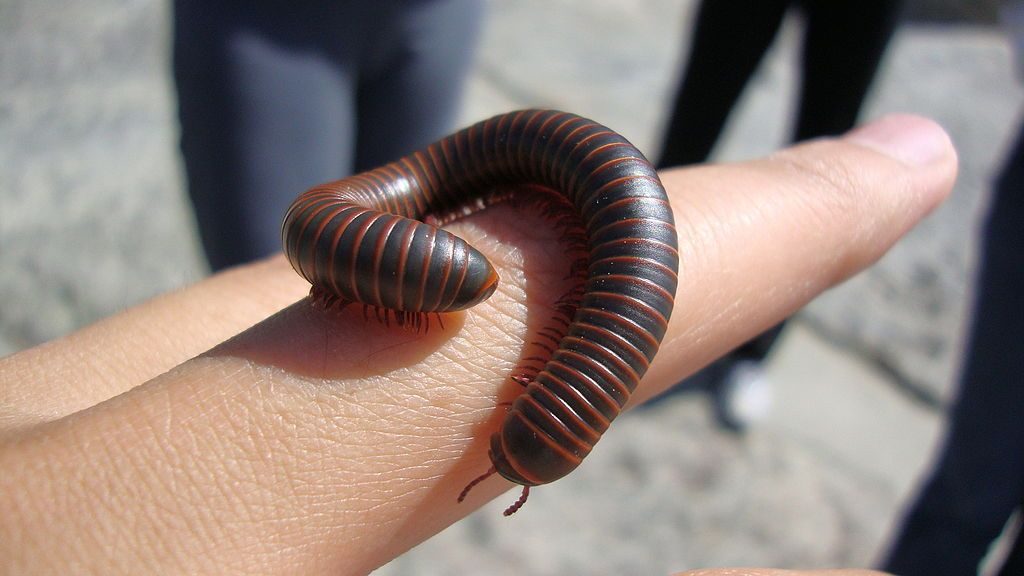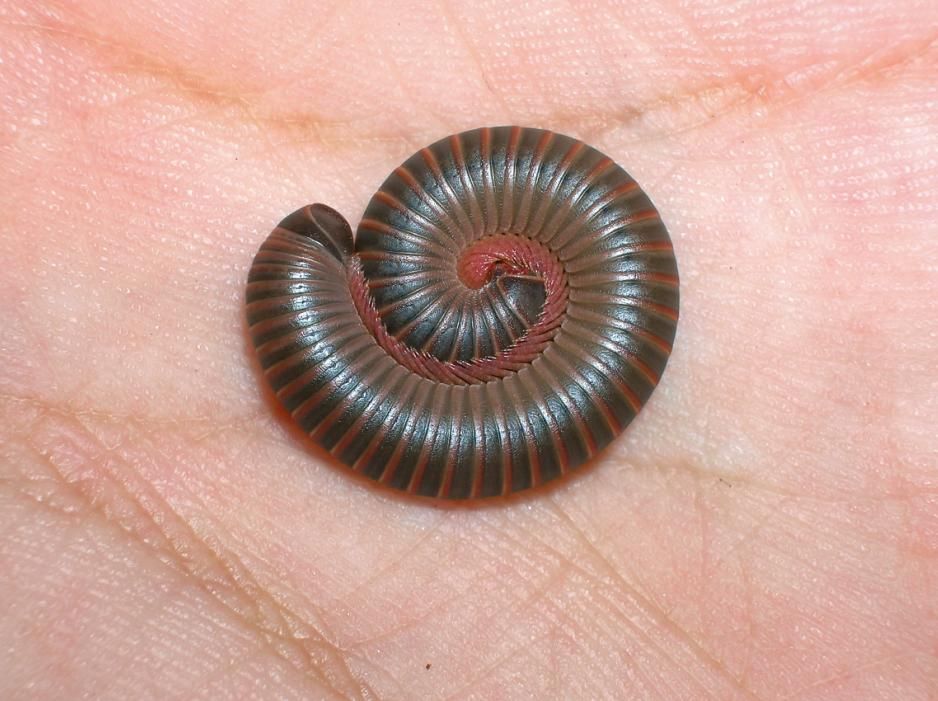
For some reason millipedes give me the creeps. A worm with a thousand legs? No way would I hold one!
However, this video of a millipede’s shadow made me take a look. (*)
TIL: millipedes prance. pic.twitter.com/PBifC3CooP
— Dick King-Smith HQ (@DickKingSmith)August 22, 2019
Who knew that millipede bodies move vertically as they walk? Who knew that their antennae tap in time to their steps?
Diplopoda or millipedes are a class of 12,000 arthropods with two pairs of jointed legs on most of their body segments. Though mille means a thousand, Wikipedia says that none of them have that many legs. The record is 750.
Millipedes are susceptible to drying out so they live where it’s cool and moist, especially under leaf litter. They’re active at night but you might see them at dusk or on a very damp day when they come out to forage for decaying leaves, decaying plants or fungi.
They can’t bite or sting so their only defense is to curl in a ball and, when really irritated, release a stinky liquid.

Millipedes are harmless to us and our houses but can surprise us when they come indoors. As Penn State’s Dept of Entomology explains:
At certain times of the year millipedes become restless and migrate from their normal living places; they [may] appear in window wells, basements, garages and other places where they become an annoyance.”
Penn State Extension Insect Advice: Millipedes
This restlessness usually has to do with mating. The crowd was looking for a cool damp place and made a mistake.
Don’t be alarmed. It’s too dry for them indoors. Penn State says, “Since millipedes do not live for more than a few days indoors, treatment inside the home is not necessary. Vacuum or sweep millipedes into a dust pan for removal.”
Did you know that you can identify male millipedes because they’re missing legs on their 7th body ring? That’s where they have gonopods for transferring sperm to the female.
Of course, you’d have to get really close to a millipede to see this.
I’m not ready for that yet.
(photos from Wikimedia Commons; click on the captions to see the originals. Video shared on Twitter by @DickKingSmith; video originally by Crystal Albright a.k.a. Chris Dull on FB)
p.s. The photos in this article are of a single species found in eastern North America, the American “giant” millipede, Narceus americanus. I’ve seen them in Pennsylvania.
Their liquid is beyond “stinky” When one gets in the house the cat must scare it and that scent is released. Then I can’t rest until I find it and put the critter outside-millipede not the cat
Howdy! Thanks for the article on millipedes. The video is not by the guy on twitter. It is by Crystal Allbright (FB/Chris Dull) Cheers, Crystal
Cyrstal, Thanks for the heads up. I have noted it in the credits.
Thank you very much!